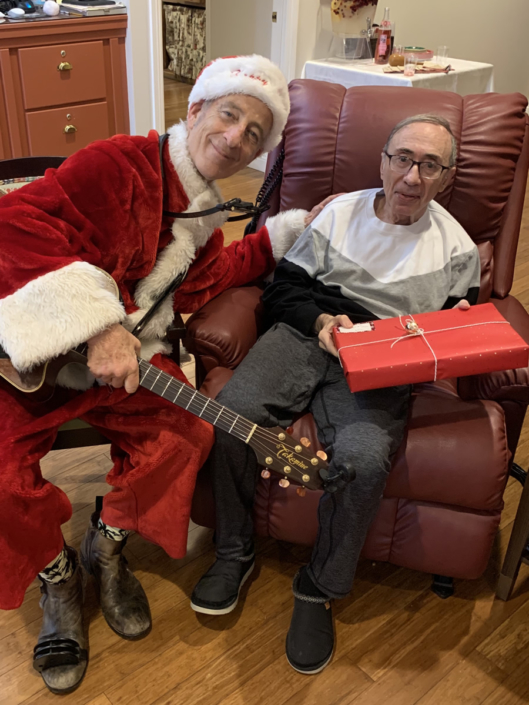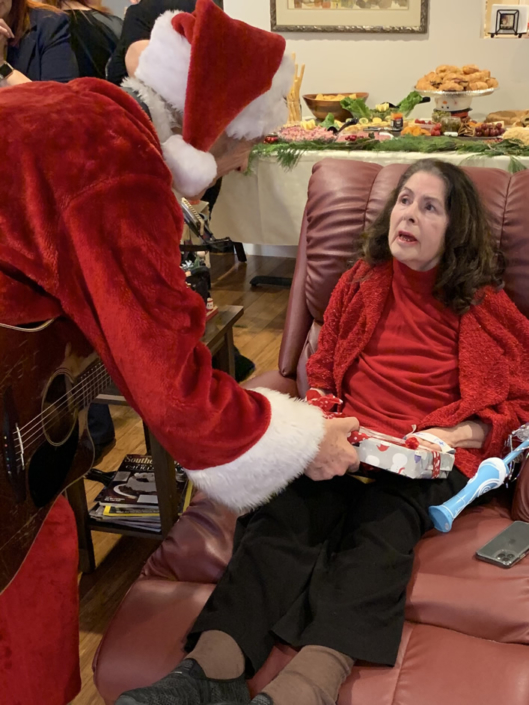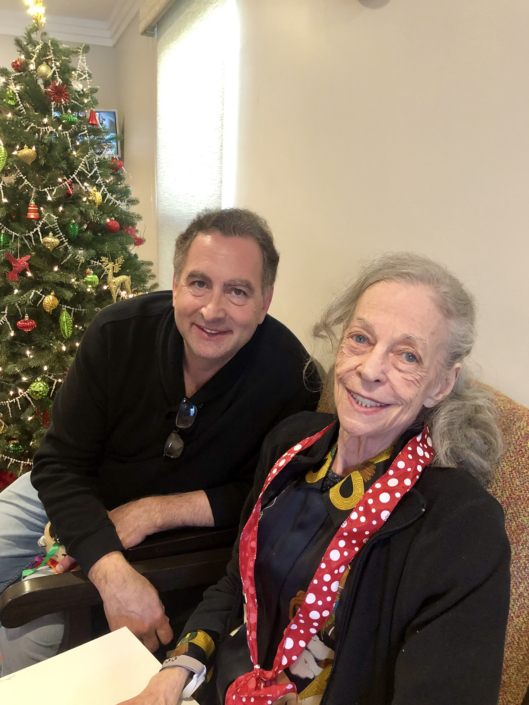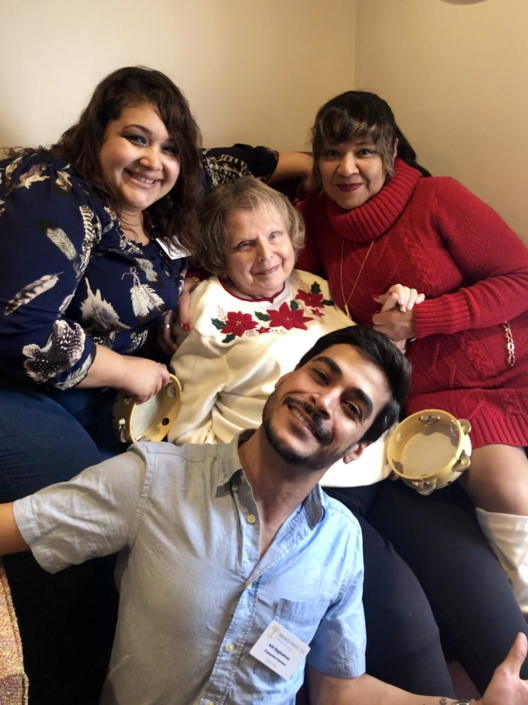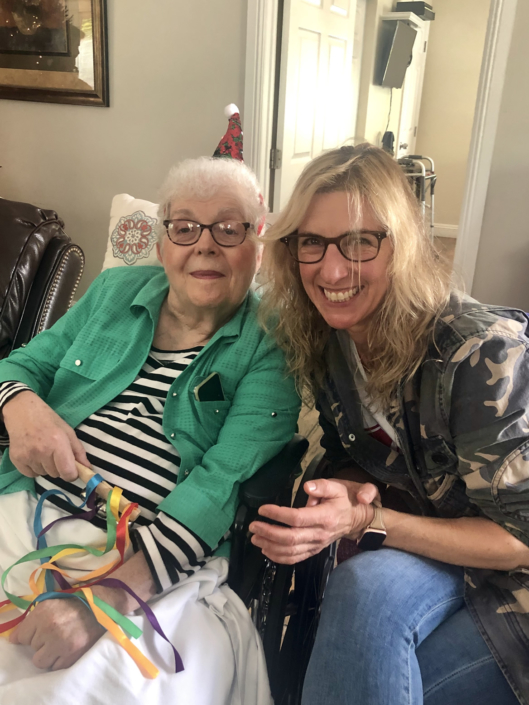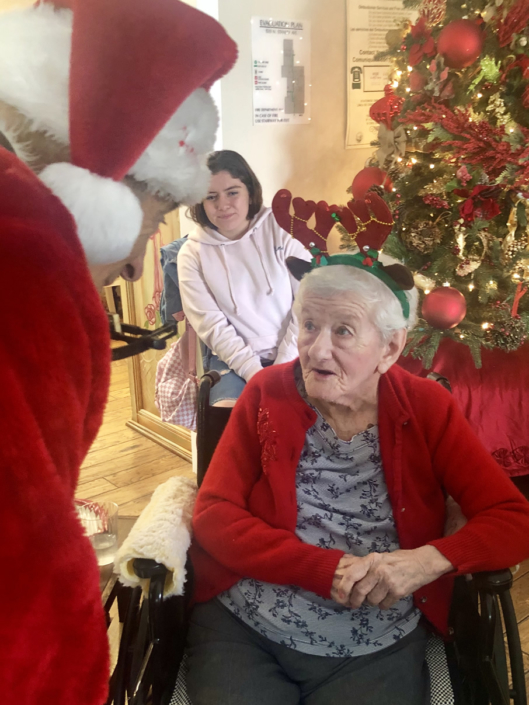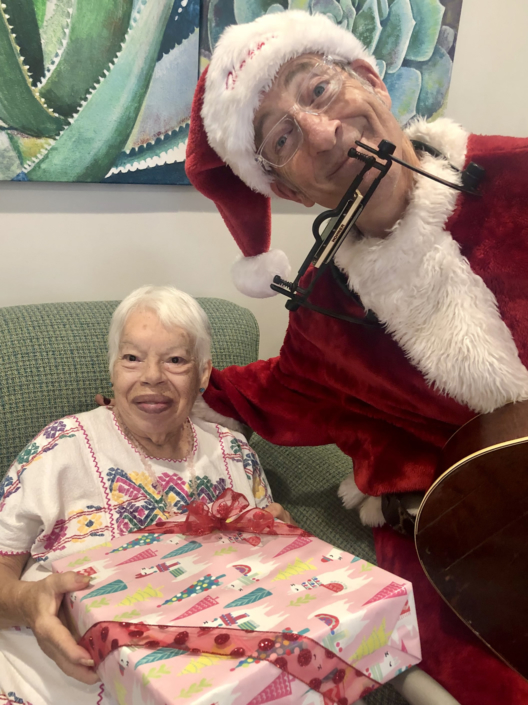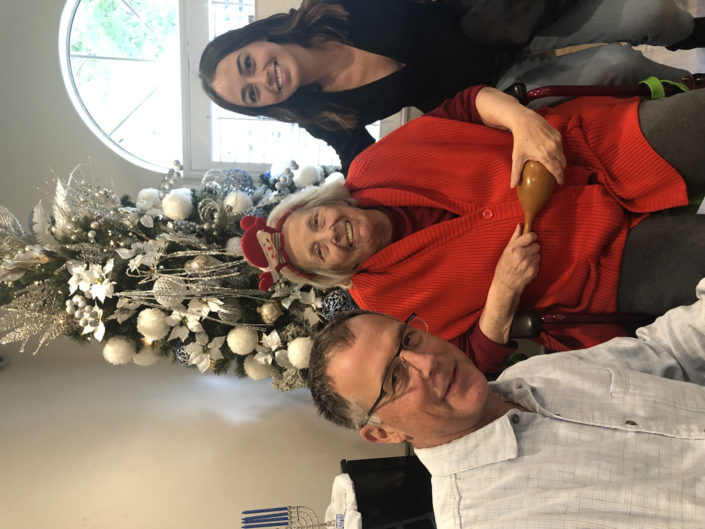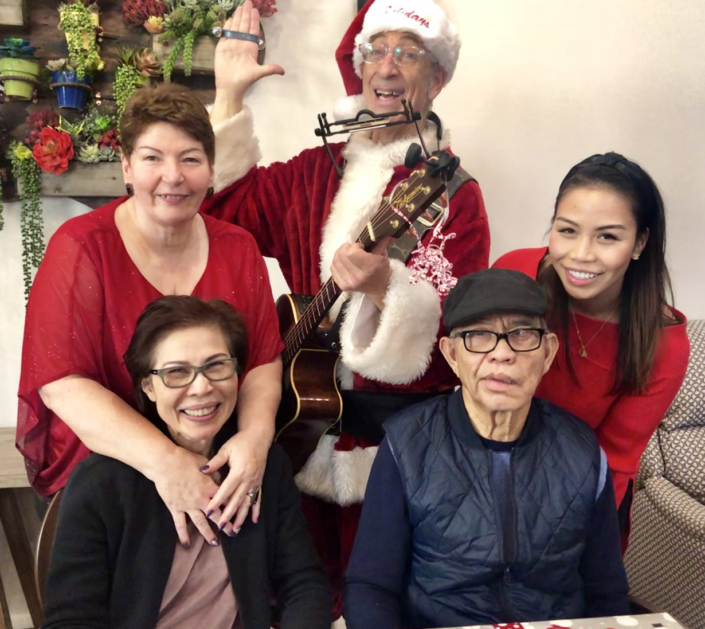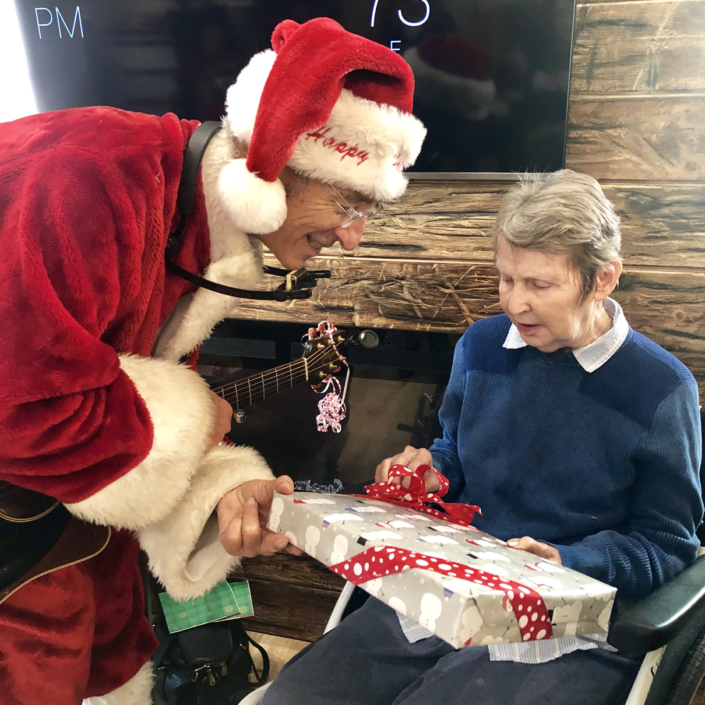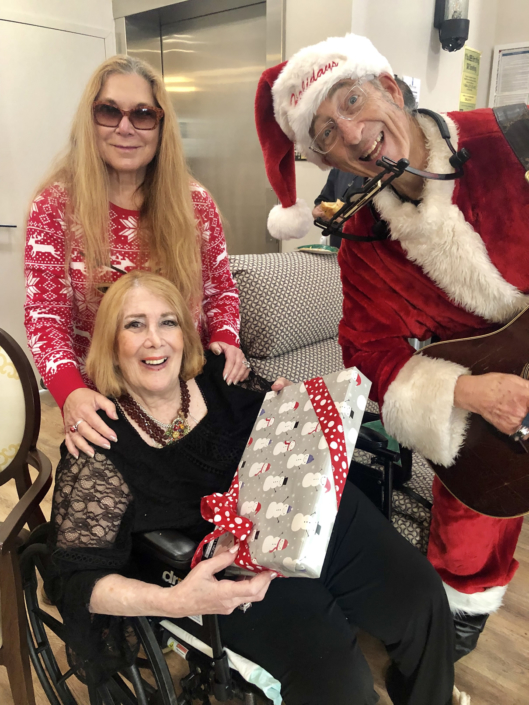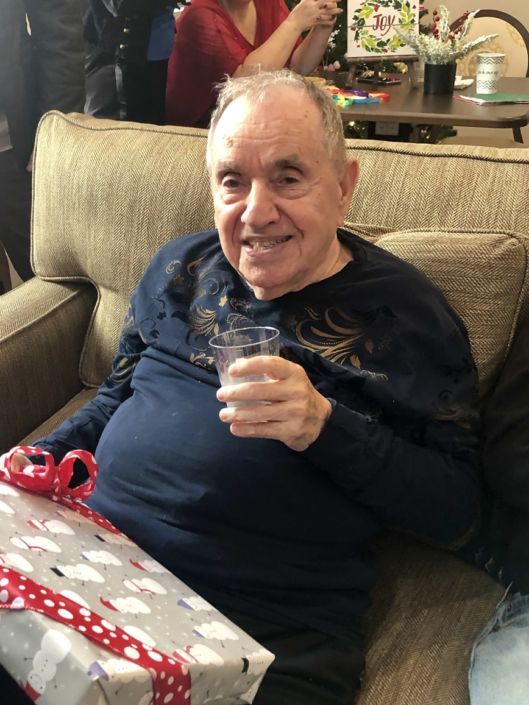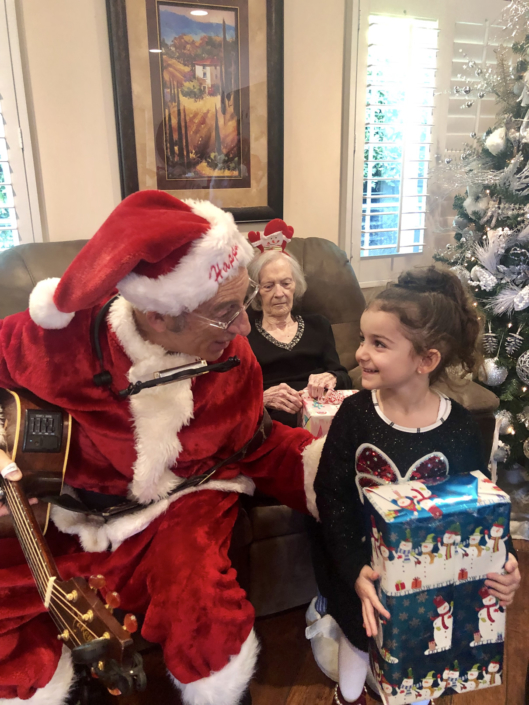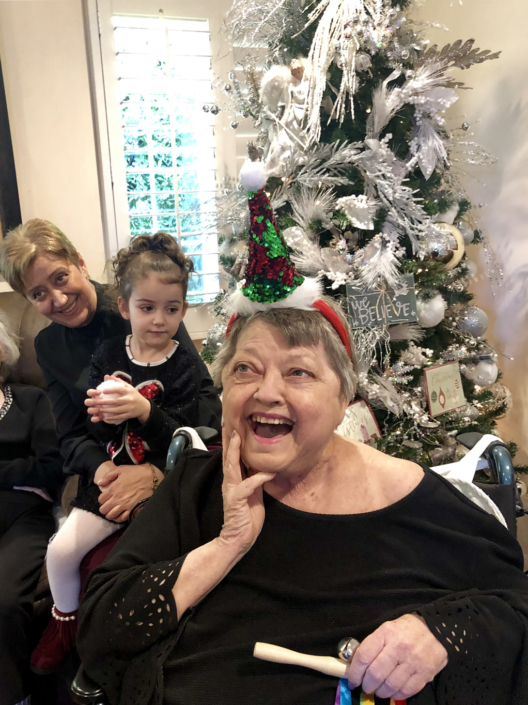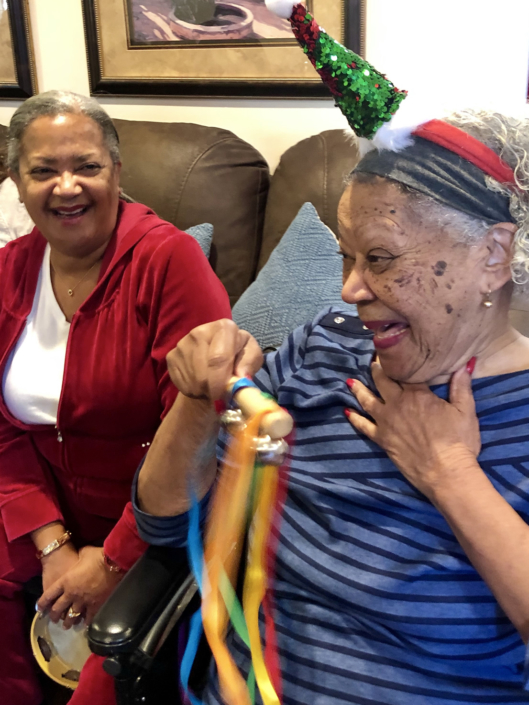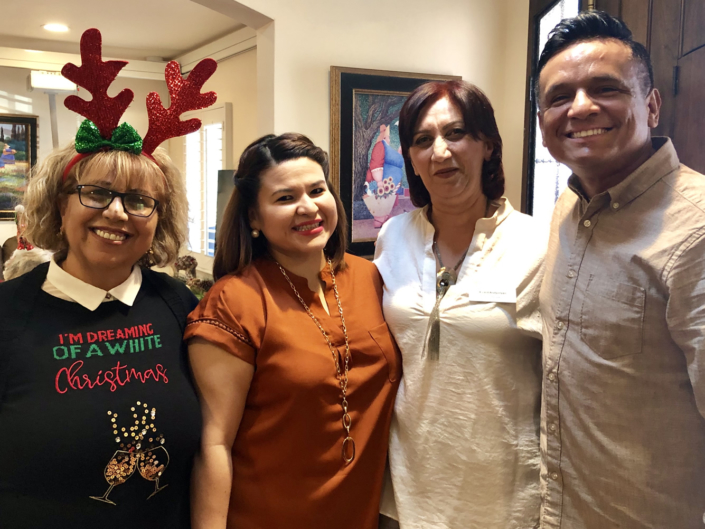We love our residents and are thrilled to be in the business of caring for them. This is one of our favorite times of the year where we host a holiday party at each community. We hope you enjoy these pics of the fun had by all.
Raya’s Paradise Residential Care Communities Blog
Come read Raya’s Paradise blog about assisted living Los Angeles.
Caregiving can be one of life’s most rewarding experiences, but it can also be one of the most draining. At some point, every caregiver must ask: “What’s best for my loved one—and for me?” While it’s natural to pour your energy into supporting someone else, doing so without nurturing your own health and well-being puts both of you at risk. As the airline analogy goes, you must put on your own oxygen mask before helping others.
/by Moti GamburdThe biggest travel day of the year, the day before Thanksgiving, is almost here. For families with an aging loved one, that brings up the question of how to get that person to the feast. Whether travel means just a few hours by car or a plane ride, here are some tips for making sure your voyage goes as smoothly as possible.
1. Talk to your loved one’s doctor. Make sure that it’s OK for them to travel before you take off, and that the place where you’re headed is somewhere they can handle. Your doctor will let you know if there’s any special preparations you need to make in advance, and can also give you advice on medication to take if problems with anxiety or other issues arise. Make sure that you fill your loved one’s prescriptions before you go.
2. Do some advance planning. Think through your trip with your loved one’s limitations in mind. Are you renting a car? Then make sure you’ve requested a minivan or other vehicle that will be easy for them to get into and out of. Make sure you can fit their wheelchair and any other bulky equipment. If you’re flying, put in a request for seats meant for the disabled and notify the airline of any dietary restrictions. Also request a wheelchair so that you have some help navigating the airport. Contact both your hotel and airline to make sure they are able to handle any medical equipment that your loved one needs. Request a hotel room at ground level.
3. Be realistic. You may need to scale down on your usual travel routine. Keep things simple. For example, consider renting a cabin in the woods that’s just a two-hour drive away, rather than going to Europe or planning anything that will require a lot of walking (such as visiting an amusement park). Do your research in advance to make sure the location is properly equipped to have your loved one as a guest. Put plenty of padding in your schedule and don’t overload on the activities: it will likely take much more time to do things than normal.
4. Make sure you have necessary supplies. Special stockings can help if your loved one will be sitting for long periods, so that their extremities don’t go numb or a blood clot forms. Make sure you have protective gear for the sun, and especially that you have enough water since seniors are more susceptible to dehydration. Make sure medical information is with you at all times in case there’s an emergency.
/by Moti GamburdIt’s well known that having friends boosts your wellbeing. In fact, today’s research has even shown that having numerous friends reduces the risk of medical conditions like heart disease. “Stereotypes of aging tend to paint older adults in many cultures as sad and lonely,” says lead author Dr. Wändi Bruine de Bruin in a release by the Americans Psychological Association. Recent studies have also demonstrated the continued importance of friendship and positive relationship networks for assisted living residents without cognitive impairment and for residents with mild cognitive impairment (MCI) and dementia.
Engagement Coordinator for Raya’s Paradise, Elsa Argueta added, “my goal is to encourage and create opportunities for our residents to make new personal connections. Through programs designed based on our residents’ hobbies and interests, I have found that seniors begin to gravitate to those with shared interests. This way they are able to keep up the social interactions that keep them mentally, emotionally, and physically healthy.
At Raya’s Paradise, we are aware that making friends in a new place can be a challenge. Elsa added, “because of this, we create events for new residents that allow for connections. These connections result in a feeling of community and family.” As a best practice, Elsa recommended that though a new residents may be somewhat anxious, tired, or overwhelmed by a move, “it is a great start to attend outing and activities as they act as a good way to strike up conversations, ask questions, and find out what upcoming programs and special events there are to look forward to.”
/by Raya's ParadiseAt the final stage, Alzheimer’s disease begins to affect a person’s physical as well as their mental capacity. At this point, the person will require intensive, round-the-clock caregiving: assistance with dressing, eating, using the bathroom, and other ordinary tasks. The goal at this point is to make sure your loved one is comfortable and that they maintain as much dignity as possible.
At this stage, communication becomes difficult, and the person loses the ability to have a conversation. They might need assistance in order to walk, and their muscles might become rigid or possess abnormal reflexes. As the disease progresses they will likely also become unable to control their bladder or to swallow. At this stage, it is important to watch for infections; there is an especially high chance of pneumonia.
Due to the extent of your loved one’s needs now, this is the time when you’re most likely to need to move the person to a facility where they can receive the proper care. This is a decision that will require lots of research and education to make sure you’re making the right choice. On this website, we have many different resources to help you find the right Alzheimer’s care solution.
Though they have trouble speaking, your loved one is still “there.” They feel emotions such as calmness, fear, and love. They can also still use their senses to perceive you and the world around them – this is their primary way of interacting. Your main focus will be on providing for their physical well-being, but try to find ways to connect with them. You might read to them, look at old photographs, play music they might like, give them some potpourri to smell, or make them a meal they would enjoy. Think about the basic life pleasures that many of us take for granted – these are the kind of things your loved one can take pleasure in at this point.
This stage of the disease is one that is difficult for caregivers, both on an emotional level and on a physical level too. As the end of your loved one’s life approaches, you might be feeling sad, relieved, or numb to any feeling at all. These reactions are all normal. Receiving guidance from a bereavement specialist, therapist, clergy member, or other support can help you address these feelings in a healthy way. It is important to confront your grief.
/by Moti GamburdEnsuring that seniors with dementia take their medications correctly is a significant concern for caregivers. The U.S. government estimates that medication mismanagement leads to 10% of hospital admissions and over 125,000 preventable deaths annually. Many seniors take multiple medications daily, increasing the risk of missed doses, overdosing, or taking the wrong pills.
/by Moti GamburdMany caregivers are proud of the fact that they’re helping their loved one and doing what they can to keep that person home with the family. But no one claims that caring for a loved one with Alzheimer’s disease is easy. Taking on this heroic task is without a doubt exhausting: mentally, physically, emotionally, and financially. Most caregivers report feeling high levels of emotional stress, and many are just simply worn out physically.
For this reason, all caregivers should consider the option of respite care. Respite care is offered at assisted living and similar facilities. A loved one can check into the facility temporarily and there get the expert care they need, allowing caregivers some time to recharge. This can be for as long as a week or two, or as short as an afternoon, giving you the chance to get some important errands done.
Rather than frantically doing a search for a respite care facility when you’re at the end of your rope and in a panic, it’s best to start your research before you think you need it, while caregiving still seems manageable. Talk to senior homes and adult daycare programs in your area to learn about the different options available.
Respite care might be a good change not just for you, but for your loved one as well. They may enjoy the chance to interact with the other seniors that they meet in their temporary home. Many facilities will hold entertaining events, or run fun activities that are specially designed for their particular ability level.
Some Alzheimer’s patients may have some trouble with being in a new environment. However, they do have the capability to get used to being in a new place if you make taking a break a regular routine.
How do you know when making use of respite care might be a good idea? Pay attention to your emotions and your body to recognize burnout. These include having trouble sleeping, exhaustion, anxiety, depression, social withdrawal, and anger. Your body will often warn you when you’re getting in over your head, so be mindful of any health problems that crop up.
Respite care is not a cop-out, and you are not abandoning your loved one. Rather, you are taking a break to prevent your own burnout. By taking advantage of the respite care option, you are strengthening your ability to provide the best possible care for your loved one. Consider that if you ignore your stress, you may create bigger problems down the line that will result in you giving up caregiving permanently. You can always run much further if you start and stop, rather than push through past the point of exhaustion.
Contact us for more information about the respite care options at Raya’s Paradise.
/by Moti GamburdA recent Forbes article confirmed what many of us already know, “people often have trouble making plans with their loved ones as they age, which can leave families unprepared to deal with unexpected circumstances.”
Over and over, Raya’s Paradise works with families whose aging parents experience a sudden accident or illness. They then scramble to identify the best option; often failing to thoroughly think through due to time constraints and fears. “Families must start now to have peace of mind later” the article continues.
/by Raya's ParadiseChief Operating Officer and Social Worker of Raya’s Paradise, Monica Westphaln, recommends that the first step is finding a good time to talk to an aging parent. Westphaln advises, “make sure you listen to what they want rather than bringing them a plan.” By taking the time to listen to the needs of an aging parent, Westphaln adds, “you can take preferences into account to help create an individual plan for care.” Involving a loved one in the process ensures that “independence and dignity are simultaneously preserved.” Including a loved one in the conversation assures a loved one they are “important to the family” and enables you to “continue the conversations.” Starting early conversations further reduces stress on families. Westphaln notes, in an event of crisis, families can feel confident that the actions taken are “aligned with the wants and needs of your parent.”Raya’s Paradise trained team members and clinical professionals are available to provide continuing education to families as needs progress. Those who have joined the Raya’s Paradise family have recognized Raya’s for creating an accessible network of professionals who assist with guidance and direction throughout the aging process.
Deciding when to transition into a senior living community is never an easy choice. Many older adults and their families wonder whether it’s best to wait until more advanced care is needed or to make the move earlier while still active and independent. For those considering a board and care home, timing can make a significant difference in long-term comfort, well-being, and peace of mind.
/by Raya's ParadisePublished by Staff On January 10, 2019 Author: By Eric Heinz
Raya’s Paradise
With assistance for hospice, dementia, Alzheimer’s disease and independent living care, Raya’s Paradise plans to open its doors by 2020 after years of going through planning processes.
Moti Gamburd, the CEO of Raya’s Paradise, said he acquired the land about five years ago but that it’s been a long process to get the project started. They had to go through San Clemente’s planning process as well as the California Coastal Commission for permitting.
Raya’s was required by the commission to remove trees to make an ocean-view corridor for residents, as well as other mandates. He got the final approvals from the Coastal Commission last year.
Raya’s Paradise will be located on the 100 block of Avenida Calafia, next to the San Clemente Inn. There will be 24-hour care and an assisted-living unit, providing independent living as well as end-of-life care.
Gamburd said he was inspired by his mother, who immigrated to the U.S. from Russia and Israel, to enter the assisted-living industry.
“In 1991, my mom, who is a nurse, came to the United States and took care of an old lady,” Gamburd said. “Because she has experience in the geriatric work, she said if I can take care of one lady, why can’t I take care of six ladies?”
In California, one home can hold up to six people at one time who are not dependents of the title holder.
“At that time, while I was in school, my father got very ill, and I kind of started to help her, and I started to fall in love with this field,” Gamburd said, adding that Raya’s has added six retirement-living facilities in California.
Monica Westphaln, the COO of Raya’s, was working for a competitor in 2011 when Gamburd decided to try to join forces with her.
“She kind of opened my eyes and showed me how much better it would be to build in a larger community,” Gamburd said. “Eventually, we landed on (San Clemente). We hired an architect from San Clemente.”
/0 Comments/by Raya's ParadiseRead the full article here
Corporate Office / General Information
Raya’s Paradise, Inc.
1156 N Gardner St.
West Hollywood, CA 90046
Tel: (310) 289-8834
Fax: (323) 851-0375
E-mail:Info@RayasParadise.com
Featured by Assisted Living Magazine as one of the best communities in Orange County

